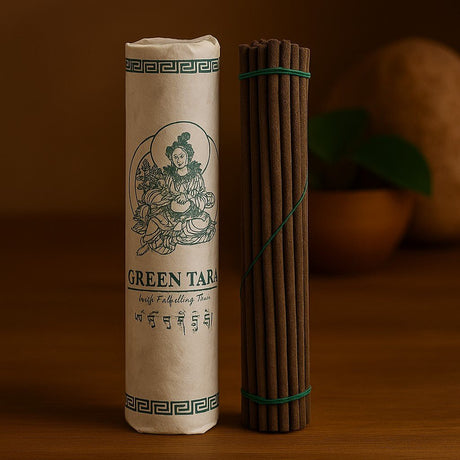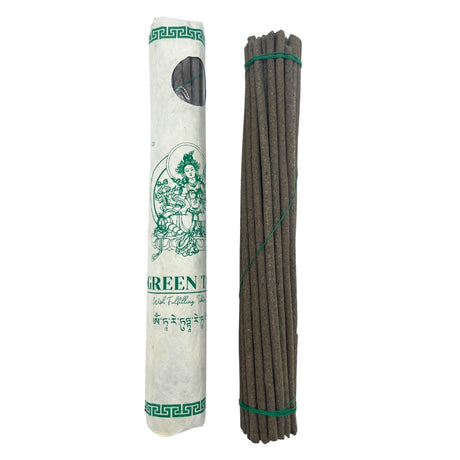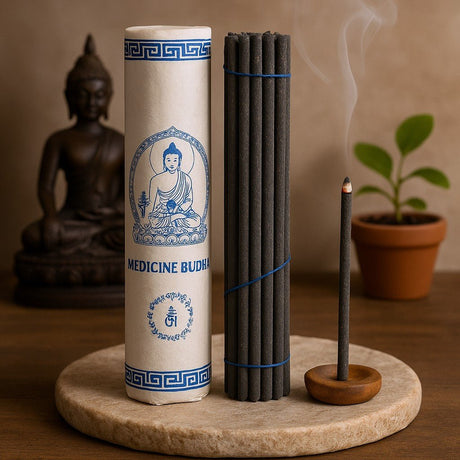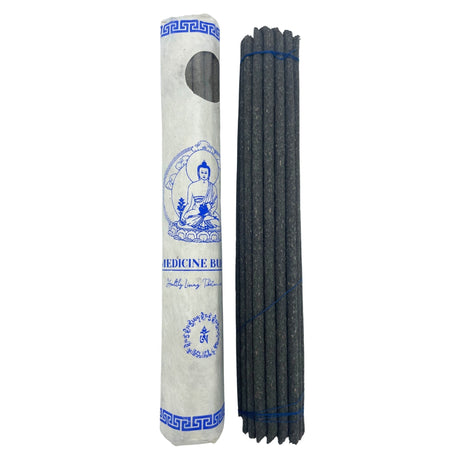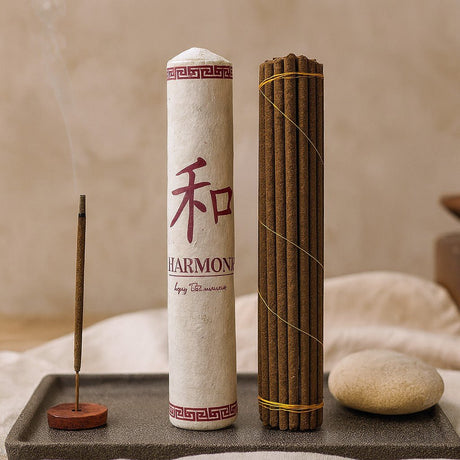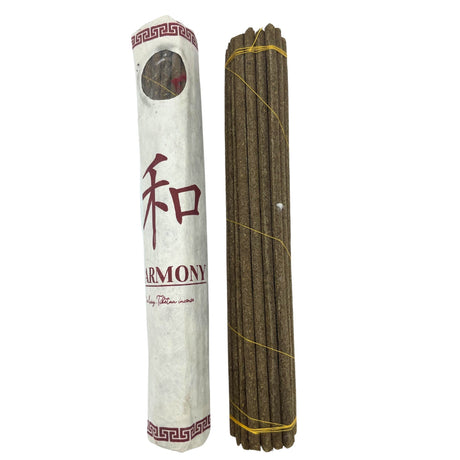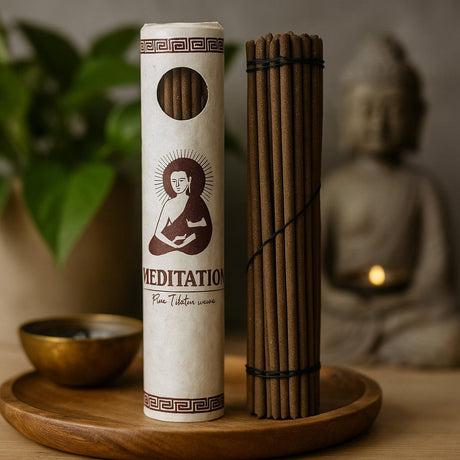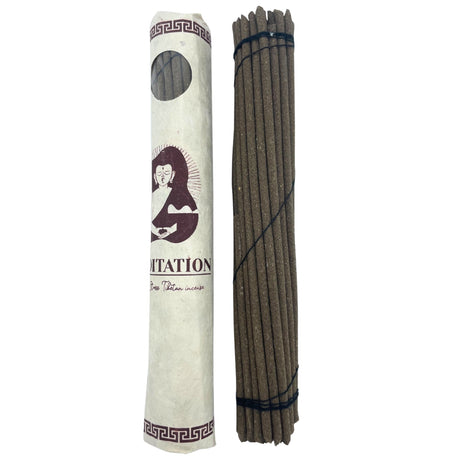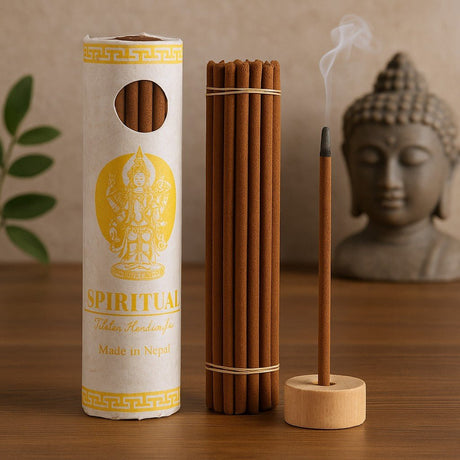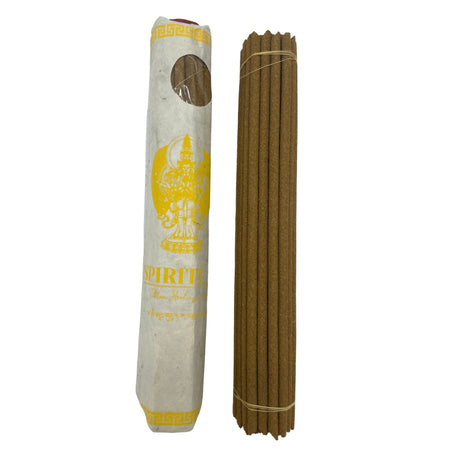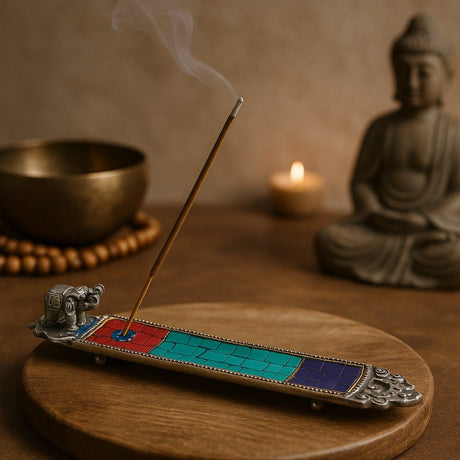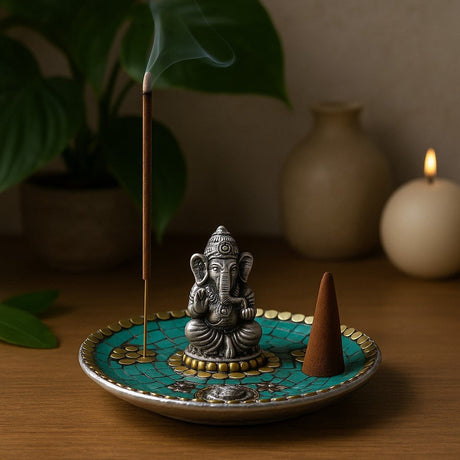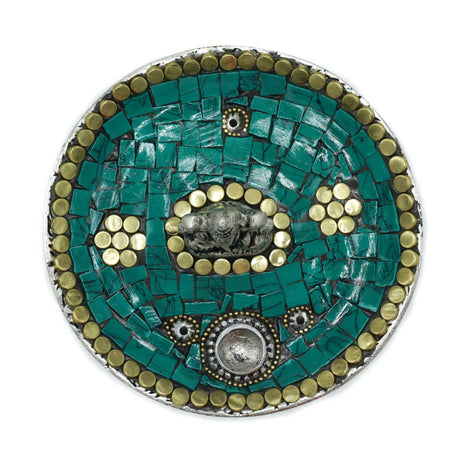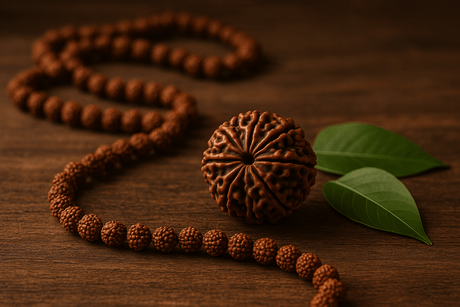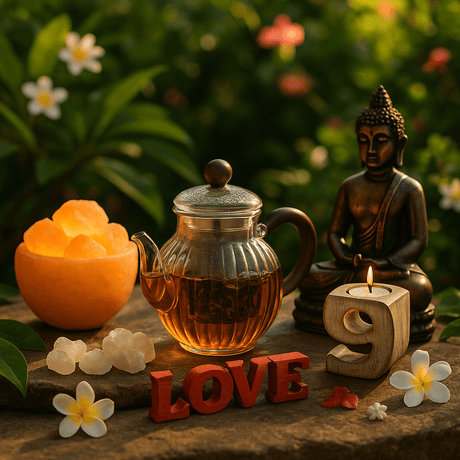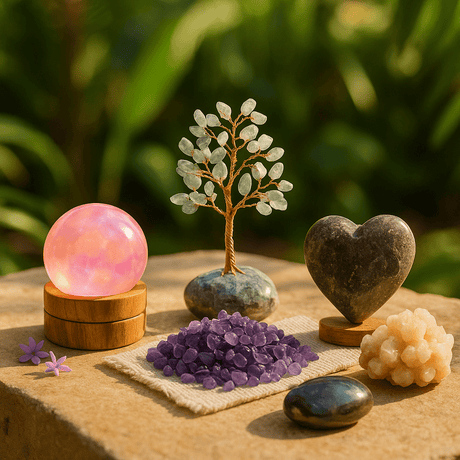Introduction to Tibetan Incense 🌀
Tibetan incense, deeply rooted in the spiritual tapestry of Tibet, serves as a bridge between the earthly and the divine. Its aromatic essence infuses rituals, meditation, and daily ceremonies, guiding souls towards a tranquil journey of spiritual awakening and cultural connection.
Historical Tapestry of Tibetan Incense 🧿
Tibetan incense began in the shadows of ancient Tibet, born from the mystical practices of the Bon religion before Buddhism's arrival in the 7th century. When Buddhism took root, it brought a new twist to incense-making, thanks to Padmasambhava in the 8th century, who mixed Indian techniques with Tibetan traditions. The golden age of Tibetan incense blossomed between the 15th and 17th centuries, under the careful hands of monastery monks. These monks, skilled in herbal knowledge, crafted unique and enduring recipes. This journey through time transformed Tibetan incense into more than just a scent – it became a symbol of spiritual harmony and cultural heritage, weaving through centuries of history and devotion.
Symbolism and Rituals in Tibetan Incense Use 🪬
Tibetan incense practices are deeply embedded in the spiritual fabric of Tibet, reflecting a rich blend of religious and cultural traditions. Rooted in ancient rituals, these practices involve using handcrafted incense made from natural herbs and woods, integral in ceremonies, meditation, and daily life.
Symbolic Significance
- Bridge Between Worlds: Incense acts as a conduit, connecting the physical realm with the spiritual, carrying prayers and intentions to the divine.
- Purification: The smoke of incense is believed to cleanse negative energy, purifying spaces and souls alike.
- Cycle of Life: Its transformation from solid to smoke mirrors the Tibetan understanding of life and impermanence, a core Buddhist concept.
Ritual Uses
- Purification Ceremonies: In rituals like 'Sang-Sol', incense is burnt to purify the surroundings, creating a sanctified environment for spiritual activities.
- Daily Offerings: Incense is a staple in daily Tibetan Buddhist practices, offered as a gesture of devotion and to invite blessings.
- Meditation: Used extensively in meditation, its scent aids in focusing the mind, deepening the meditative experience.
- Festivals and Celebrations: During special occasions like Losar (Tibetan New Year), incense plays a central role in rituals, signifying renewal and purification.
The Healing Whisper of Tibetan Incense 🌿
In Tibetan incense, each stick is a blend of natural ingredients, each with its unique health benefits. For instance, ingredients like sandalwood are not just for their pleasant scent; they're known for their ability to calm the mind and enhance clarity, making them perfect for meditation and stress relief. Similarly, juniper, often used in Tibetan rituals, has been found to have air-purifying properties, potentially reducing harmful airborne bacteria.
Furthermore, modern research has started to align with these ancient practices. Studies suggest that certain herbs and spices used in Tibetan incense, like myrrh and frankincense, may have anti-inflammatory and antidepressant properties. This aligns with the traditional use of incense in creating a serene environment conducive to mental and emotional well-being.
Cedar, with its deep, grounding aroma, is renowned for its ability to foster stability and resilience. It's a natural tonic for stress, helping to soothe and calm the nervous system. Saffron, a rare and precious spice, adds not only a luxurious scent but also has mood-enhancing properties, often used to uplift the spirit and promote a sense of joy and well-being. Rhododendron, a flower native to the Himalayan region, contributes a gentle, floral note. It's known for its soothing effects, especially beneficial in reducing inflammation and promoting respiratory health.
Most Common Scents of Tibetan Incense 🌀
Tibetan incense is renowned for its rich and diverse array of scents, each with unique cultural and therapeutic significance. Here's a detailed look at some of the most common aromas:
| Scent | Description | Cultural Significance | Therapeutic Properties |
|---|---|---|---|
| Sandalwood | A warm, rich, and woody aroma | Symbolizes clarity of thought in Buddhist practices | Promotes calmness, aids in meditation |
| Juniper | Crisp, piney, with a slightly sweet undertone | Used in rituals for purification and protection | Believed to cleanse and invigorate the mind and body |
| Cedar | Earthy and soothing, with a hint of spice | Represents endurance and strength in Tibetan culture | Known for its grounding and calming effects |
| Myrrh | Deep, smoky, with a balsamic note | Used in healing rituals and to signify transformation | Helps in emotional balance and well-being |
| Saffron | Rich and exotic, with a slightly bitter edge | A symbol of wealth and purity in Tibetan traditions | Offers uplifting and mood-enhancing qualities |
| Rhododendron | Floral and slightly earthy | Integral to rituals during spring festivals | Associated with relaxation and stress relief |
Each scent in this table carries a piece of Tibetan heritage, weaving together the spiritual, cultural, and therapeutic tapestry that defines the essence of Tibetan incense. 🌿
Selecting and Burning Tibetan Incense 🧿
Choosing Your Incense
- Purpose: Decide why you're using incense - relaxation, spiritual rituals, or therapeutic benefits.
- Scent Preference: Woody and earthy for grounding, floral and sweet for uplifting.
- Quality: Opt for natural, traditionally made incense.
Burning Tips
- Right Environment: Well-ventilated space, calm setting.
- Lighting Technique: Light the tip, blow out the flame gently, let it smolder.
- Safety: Use an incense holder, keep away from flammable items, and ensure it's extinguished after use.
Enhancing Your Experience
- Pair incense with meditation or yoga.
- Experiment with different scents to find what resonates with you.
Conclusion 🪬
The world of Tibetan incense offers a fascinating blend of history, culture, and spirituality. By understanding its varieties, significance, and proper usage, you can enhance your daily rituals and create a space of tranquility and mindfulness. Whether for meditation, healing, or spiritual practices, Tibetan incense stands as a timeless link to ancient traditions. Embrace this aromatic journey and let the sacred scents of Tibet transform your surroundings and spirit 🌟

